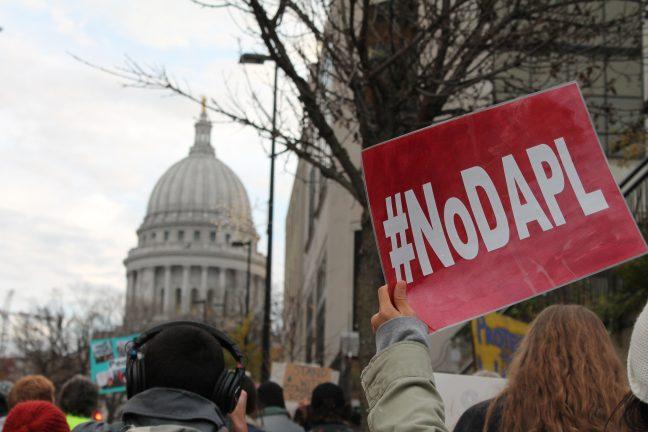In a victory for energy expansion, President Donald Trump has signed executive orders that have revived the Keystone XL and Dakota Access pipelines. This is just the start of his energy policies, which will continue the growth we’ve seen over the last few years thanks to fracking.
While a handful of agitated activists might attempt to stop the constructions, the great majority of the United States will benefit from the efficient transportation of an economic need. A society cannot succeed without energy.
The truth is most of the concerns around pipelines don’t amount to much. The Dakota Access pipeline does not run through or endanger the Standing Rock Reservation as many opponents have claimed.
In fact, other pipelines near the route of Dakota Access have existed for years. There is also no evidence of human remains where the underground pipeline will be built as some advocates against it have claimed.
Falling oil cost negatively impacts Wisconsin county economy
Law enforcement’s heroic efforts to remove devilishly recalcitrant protesters have been unsuccessful, but they now have an ally in the White House who I am confident will work tirelessly to ensure pipeline construction is protected.
The Keystone pipeline debate has been in the news longer than Dakota Access. President Barack Obama vetoed a bill authorizing it in February 2015. Ironically, his administration had no problem with financing an $18 billion pipeline in Kenya.
Environmentalists’ arguments against Keystone were similar to those of Dakota Access, except there weren’t widespread protests with regard to construction near Native American reservations.
Fear over oil spills and accidents are exaggerated. Any structure built has its weaknesses, but pipelines are very safe. Research fellow Isaac Orr of the Heartland Institute found there are an average of 216 spills from oil pipelines per year, approximately spilling an annual average of 35,317 barrels. It might sound large, but that figure is minuscule to the 9.8 billion barrels of oil transported a year.
Ravings of a Future Stay-At-Home Dad: On DAPL’s Media Portrayal
It is estimated 99.99 percent of oil transported in 2015 arrived safely at its destination.
Those truly threatened are those who wouldn’t be able to enjoy the construction of the pipelines. Companies like TransCanada and Dakota Access Services wouldn’t prosper without them. Construction workers keep their jobs so long as there is something that needs completion. The other losers would’ve been consumers who’d miss out on the benefits of more efficient energy transportation. All of this great progress was being halted until now.
Blocking pipelines means oil would have to be transported via rail and a study from the nonpartisan Fraser Institute in Vancouver, Canada, found pipeline transportation is 4.5 times safer than trains. Any oil spill can be cleaned up, but fewer accidents are better.
Preventing the construction of future pipelines would hurt America’s energy infrastructure, leading to loss of 1,450.25 gigawatts, according to a report from the Consumer Energy Alliance.
That’s enough to power California, New York, Texas, Ohio and all of New England combined. The impact would be a minimum loss of $15.38 billion in private capital expenditures and create more financial stress for 43 million people who live under the poverty line. Nearly a third of American electricity generation would be lost by 2030 under these dreadful conditions.
Pipelines are just one part of the equation for the American energy renaissance.
Thanks to hydraulic fracturing (more commonly known as fracking), oil production in the country has been on a sharp rise. Around 5.5 million barrels of crude oil were being produced every day in 2010. Now we produce more than 9 million. In fact, we have such an abundance of energy in the United States that Japan has just bought its first shipment of American liquefied natural gas.
The fracking revolution has also been beneficial from a geopolitical standpoint. It has changed the world oil marketplace for the next several years.
Global crises like a weakened European economy and ISIS would often lead oil prices to spike, but the United States remains far away from these problems, allowing for fracking continue without a hitch.
UW student, community members stand in solidarity with Standing Rock protesters
Once again, concerns over environmental damage are unfounded. What’s so amazing about the fracking boom is it’s led to a drop in CO2 emissions.
The development of this cleaner way to extract resources means we can replace older oil rigs that cause more pollution.
As a businessman, Trump understands the huge potential in the American energy sector and it would be foolish for him not to enable more growth. Building more pipelines and continuing to use the power of the drill will keep prices low, companies growing and people happy.
When in doubt, the power of the market is the way to go.
John M. Graber ([email protected]) is a junior majoring in history and political science.














